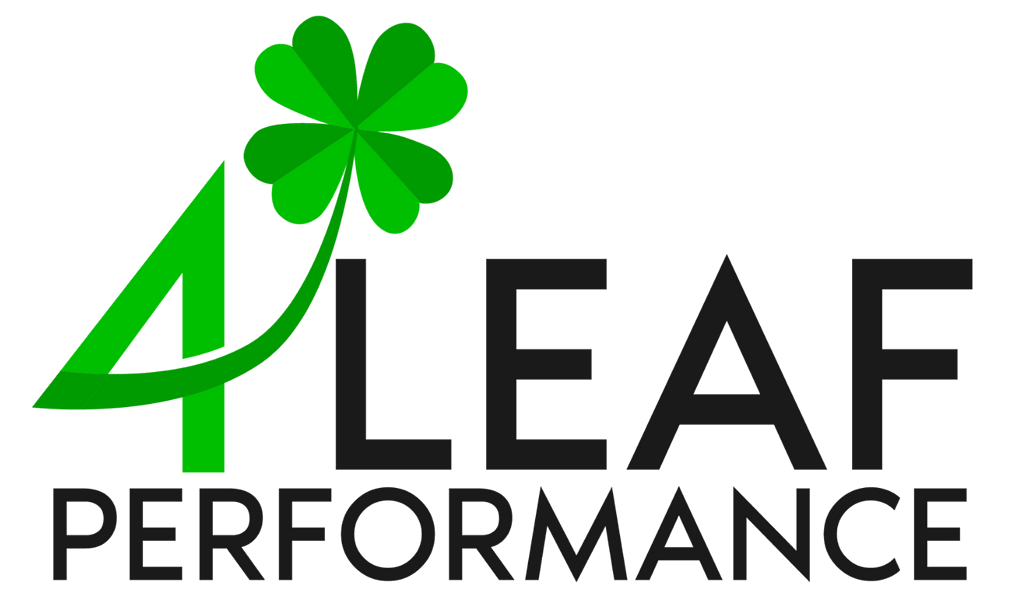Navigating a business acquisition can be complex, with one of the biggest challenges being integrating different company cultures. When two companies merge, they bring together their resources, operations, and distinct company cultures.
Company culture is how employees behave and interact, influenced by the organization’s values, mission, and practices. It sets the tone for how work gets done and how employees relate to each other. In a business acquisition, understanding the company culture of both organizations involved helps identify potential areas of synergy and conflict. A well-integrated corporate culture can increase employee engagement and productivity and create a more cohesive work environment.
Understanding Cultural Differences
Understanding company culture is crucial for the success of any business acquisition. Company culture encompasses the shared values, beliefs, and behaviors that shape how employees interact and work within an organization.
When two companies merge through a business acquisition, merging their corporate cultures can be one of the most challenging aspects. Each organization’s values, beliefs, and behaviors comprise its unique company culture. Recognizing and respecting these cultural elements is vital to ensuring a smooth transition and integration during a merger and acquisition.
Identifying Cultural Clashes
Cultural clashes often arise in key areas, such as communication styles, decision-making processes, and work ethics. For example, one company might value open, informal communication, while the other prefers a more hierarchical, formal approach. If not recognized and managed, these differing styles can lead to confusion and frustration among employees.
- Communication Styles: One company might have a formal communication style, while the other prefers a more informal approach. These differences can lead to misunderstandings and misinterpretations.
- Decision-Making Processes: Differing approaches to decision-making, such as top-down versus collaborative methods, can cause friction and slow down the integration process.
- Leadership Styles: Variations in leadership styles, such as authoritative versus participative, can impact how employees respond to new management and adapt to changes.
- Workplace Norms: Different workplace norms and practices, such as work-life balance expectations or dress codes, can create discomfort and resistance among employees.
Adverse Effects on Business Acquisition Success
Cultural clashes can have several adverse effects on the success of a business acquisition:
- Decreased Morale: Employees may feel uncertain and stressed if they perceive a misalignment between their values and the new corporate culture, leading to decreased morale and engagement.
- Reduced Productivity: Conflicts and misunderstandings arising from cultural differences can disrupt workflows and reduce overall productivity.
- Employee Turnover: If employees feel that the new company culture is incompatible with their own, they may choose to leave the organization, resulting in a loss of talent and institutional knowledge.
- Failed Integration: Without addressing cultural differences, the integration process can stall, preventing the realization of the full potential and synergies of the merger and acquisition.
Pre-Acquisition Planning
Pre-acquisition planning is a critical phase in the business acquisition process. It involves thorough preparation and assessment to ensure that the integration of company cultures is as seamless as possible. Proper planning can help identify potential cultural clashes and develop strategies to mitigate them, setting the stage for a successful merger and acquisition.
Due Diligence on Culture
Cultural due diligence should be an integral part of your pre-acquisition planning. Understanding the cultural landscape of the company you plan to acquire can help you anticipate challenges and prepare accordingly.
Steps in cultural due diligence include:
- Conducting Surveys and Interviews: Gather insights from employees and management to understand their perceptions and experiences.
- Reviewing Company Policies and Practices: Examine existing policies, practices, and values to identify areas of alignment and divergence.
- Observing Workplace Behavior: Observe how employees interact and make decisions to get a real-time sense of the corporate culture.
Involving Cultural Experts
Engaging cultural consultants or experts can provide valuable insights during the pre-acquisition phase. These professionals can help you identify potential integration challenges and develop strategies to address them. Their expertise in navigating complex cultural landscapes can be instrumental in ensuring a smoother transition.
The benefits of involving cultural experts include:
- Objective Assessment: Receive an unbiased evaluation of both company cultures.
- Tailored Integration Strategies: Develop customized strategies based on expert recommendations.
- Ongoing Support: Gain access to continuous support throughout the integration process.
Setting Clear Cultural Objectives
Defining clear cultural objectives is essential for guiding the integration process. Decide whether you aim to assimilate the acquired company’s culture, blend elements from both cultures, or adopt certain aspects of the target company’s culture. Clear objectives help set expectations and provide a roadmap for cultural integration.
Steps to set cultural objectives:
- Align with Leadership: Ensure that leadership teams from both organizations agree on the cultural vision.
- Communicate Objectives: Communicate the cultural goals to all employees to foster understanding and buy-in.
- Develop an Action Plan: Create a detailed action plan outlining the steps to achieve the cultural objectives.
Building a Cultural Integration Plan
A comprehensive cultural integration plan should be developed during the pre-acquisition phase. This plan should outline the steps, timelines, and resources required for successful cultural integration. It should also include mechanisms for monitoring progress and making adjustments as needed.
Components of a cultural integration plan:
- Integration Teams: Form teams responsible for overseeing the integration process.
- Communication Strategy: Develop a strategy for keeping all stakeholders informed and engaged.
- Training and Development: Implement training programs to help employees adapt to the new corporate culture.
- Feedback Mechanisms: Establish channels for employees to provide feedback and express concerns.

Leadership Alignment
When leadership teams from both organizations align on vision, values, and strategic objectives, it sets a positive tone for the rest of the company. This alignment ensures everyone is working towards common goals and reduces the risk of cultural clashes derailing the merger and acquisition process.
Unified Vision and Values
A unified vision and core values provide a clear direction for the newly merged organization. The leadership teams from both companies must come together and agree on these foundational elements.
Steps to establish a unified vision and values:
- Collaborative Workshops: Conduct workshops with leaders from both companies to discuss and define the shared vision and values.
- Document and Communicate: Document the agreed-upon vision and values and communicate them to all employees to ensure alignment.
- Lead by Example: Leadership should consistently demonstrate these values through their actions and decisions to reinforce their importance.
Consistent Messaging
Consistent messaging from the leadership team is vital to building trust and transparency during a business acquisition. Clear and consistent communication helps alleviate uncertainties and informs employees about the integration process.
Strategies for consistent messaging:
- Regular Updates: Provide updates on the progress of integration and any significant changes.
- Unified Communication Channels: Use unified communication channels to ensure that all employees receive the same information simultaneously.
- Open Forums: Host forums or town hall meetings where employees can ask questions and voice their concerns.
Communication Training
Providing communication training for leaders and managers ensures that they are equipped to convey messages effectively and address employee concerns. This training helps them build their communication skills and fosters a culture of open dialogue.
Components of communication training:
- Effective Messaging: Train leaders on how to craft and deliver clear, concise, and impactful messages.
- Active Listening: Teach active listening skills to ensure leaders understand and address employee concerns.
- Conflict Resolution: Provide training on conflict resolution techniques to handle any disputes that arise during the integration process.
Accountability and Role Clarity
It is crucial to ensure that leaders have clear roles and are held accountable for their part in the integration process. This clarity helps prevent confusion and ensures that everyone knows their responsibilities.
Steps to ensure accountability and role clarity:
- Define Roles: Clearly define the roles and responsibilities of each leader in the integration process.
- Set Expectations: Establish clear expectations and performance metrics related to cultural integration.
- Regular Check-ins: Conduct regular check-ins to monitor progress and address any issues.
Building Trust and Collaboration
Building trust and fostering collaboration among the leadership teams from both companies is essential. A robust and united leadership team can effectively guide the rest of the organization through the integration process.
Tips for building trust and collaboration:
- Team-Building Activities: Organize team-building activities to strengthen relationships and improve collaboration.
- Transparent Decision-Making: Promote transparency in decision-making processes to build trust and credibility.
- Encourage Open Dialogue: Foster an environment where leaders feel comfortable sharing their ideas and concerns.
Employee Involvement and Support
When employees feel included and supported, they are more likely to embrace the changes and contribute positively to the integration process.
Engaging Employees
Engaging employees in the integration process helps to build a sense of ownership and commitment to the new company culture. Involving them meaningfully can also provide valuable insights and foster a collaborative environment.
Ways to engage employees:
- Workshops and Focus Groups: Conduct workshops and focus groups to gather employee input on cultural integration and identify potential challenges.
- Integration Committees: Form integration committees with representatives from both companies to oversee and facilitate the integration process.
- Feedback Sessions: Hold regular feedback sessions where employees can share their experiences and suggestions for improvement.
Providing Support Systems
Providing robust support systems is essential to help employees navigate the changes that come with a business acquisition. These systems can address emotional, professional, and practical needs, ensuring employees feel supported throughout the transition.
Types of support systems:
- Counseling Services: Offer counseling services to help employees manage stress and anxiety related to the merger and acquisition.
- Training Programs: Implement training programs to equip employees with the skills and knowledge to adapt to new processes and systems.
- Mentorship Programs: Establish mentorship programs to pair employees from the merging companies, facilitating knowledge transfer and relationship building.
Clear Communication Channels
Maintaining clear communication channels is vital for ensuring that employees receive timely and accurate information. Effective communication can reduce uncertainties and keep employees informed about the integration process.
Tips for clear communication channels:
- Intranet Portals: Use intranet portals to centralize information and provide easy access to updates, resources, and FAQs.
- Regular Newsletters: Send out regular newsletters to keep employees informed about the progress of the integration and any upcoming changes.
- Dedicated Help Desks: Set up dedicated help desks where employees can ask questions and receive support.
Promoting a Positive Work Environment
Promoting a positive work environment is essential for maintaining employee morale and fostering a cohesive company culture. A supportive and inclusive environment can help employees feel more comfortable and engaged during the transition.
Strategies for promoting a positive work environment:
- Team-Building Activities: Organize team-building activities to strengthen relationships and build a sense of community among employees.
- Wellness Programs: Offer wellness programs to support employees’ physical and mental well-being during integration.

Celebrating Diversity
Embracing cultural diversity means recognizing and valuing the different backgrounds, experiences, and perspectives that employees bring to the organization. This approach can enhance creativity, improve problem-solving, and drive innovation.
Steps to embrace cultural diversity:
- Cultural Awareness Training: Provide cultural awareness training to help employees understand and appreciate diverse perspectives and practices.
- Inclusive Policies: Implement inclusive policies that promote equal opportunities and respect for all employees.
- Diversity Celebrations: Organize events and activities that celebrate cultural diversity, such as cultural fairs, heritage months, and international food days.
Leveraging Diverse Strengths
Leveraging employees’ diverse strengths can create a more robust and innovative organization. By recognizing and utilizing the unique skills and talents of employees from both companies, you can enhance overall performance and achieve better results.
Ways to leverage diverse strengths:
- Skill Mapping: Conduct skill mapping exercises to identify and document employees’ unique strengths and expertise.
- Cross-Functional Teams: Form cross-functional teams that combine diverse perspectives and skills to tackle complex projects and challenges.
- Mentorship Programs: Establish mentorship programs that pair employees from different backgrounds to facilitate knowledge transfer and professional growth.
Fostering an Inclusive Environment
Fostering an inclusive environment where all employees feel valued and respected is crucial for building a cohesive company culture. An inclusive environment encourages collaboration, engagement, and loyalty among employees.
Strategies for fostering an inclusive environment:
- Open Dialogue: Encourage open dialogue and create safe spaces where employees can share their experiences and ideas without fear of judgment.
- Inclusive Leadership: Promote inclusive leadership practices, where leaders actively seek out and consider diverse viewpoints in decision-making processes.
- Employee Resource Groups: Support forming employee resource groups (ERGs) that provide a platform for employees with shared identities or interests to connect and advocate for their needs.
Encouraging Continuous Learning
Encouraging continuous learning about diversity and inclusion helps to sustain a culture of respect and appreciation for differences. Providing ongoing education and resources can deepen employees’ understanding and commitment to these values.
Methods for encouraging continuous learning:
- Workshops and Seminars: Offer workshops and seminars on diversity, equity, and inclusion topics.
- Online Resources: Provide access to online resources, such as articles, videos, and courses, that explore various aspects of diversity and inclusion.
Monitoring and Adapting
Monitoring and adapting are critical components of a successful business acquisition. Continuous assessment and flexibility ensure that the integration process remains on track and that emerging challenges are addressed promptly.
Regular Check-ins and Surveys
Conducting regular check-ins and surveys helps gauge employee sentiment and identify ongoing cultural integration issues. These tools provide valuable insights into how employees adapt to the new company culture and highlight areas needing additional attention.
Steps for effective check-ins and surveys:
- Scheduled Check-ins: Schedule regular check-ins with employees and teams to discuss their experiences and gather feedback on the integration process.
- Anonymous Surveys: Conduct anonymous surveys to encourage honest feedback and identify potential problems that might not be openly discussed.
- Feedback Analysis: Analyze the feedback to identify trends, areas of concern, and opportunities for improvement.
Flexibility and Adaptation
Flexibility and a willingness to adapt are essential for managing the dynamic nature of company mergers. Being open to making changes based on feedback and evolving circumstances helps ensure that the integration process remains effective.
Strategies for flexibility and adaptation:
- Responsive Leadership: Encourage leaders to be responsive to feedback and ready to adjust the integration plans as needed.
- Iterative Approach: Adopt an iterative approach to integration, where strategies are continually refined based on real-time feedback and results.
- Pilot Programs: Implement pilot programs for new initiatives to test their effectiveness before rolling them out company-wide.
Tracking Key Performance Indicators (KPIs)
Tracking key performance indicators (KPIs) allows you to measure the success of the cultural integration efforts. KPIs provide a quantitative basis for assessing progress and identifying areas that require attention.
Essential KPIs to track:
- Employee Engagement: Measure employee engagement levels to assess how well employees adapt to the new company culture.
- Turnover Rates: Monitor turnover rates to identify potential retention issues and gauge employee satisfaction.
- Productivity Metrics: Track productivity metrics to ensure the integration process does not negatively impact performance.
- Feedback Scores: Analyze scores from feedback surveys to measure employee sentiment and satisfaction with the integration process.
Continuous Improvement
Continuous improvement involves regularly evaluating the integration process and making necessary adjustments to enhance its effectiveness. This approach ensures the integration remains aligned with the company’s goals and addresses emerging challenges.
Steps for continuous improvement:
- Regular Reviews: Conduct regular reviews of the integration process to evaluate its progress and effectiveness.
- Feedback Implementation: Implement changes based on employee feedback and KPI analysis to improve the integration experience.
- Best Practices Sharing: Share best practices and success stories within the organization to promote continuous learning and improvement.
Practical Tools and Techniques
Integrating company cultures during a business acquisition can be complex and challenging. Practical tools and techniques can facilitate this integration, making it more manageable and effective.
Management Interviews and Diagnostics
Conducting management interviews and diagnostics helps uncover each organization’s underlying cultural dynamics. This process provides valuable insights into managerial styles, priorities, and potential conflict areas.
Steps for effective management interviews and diagnostics:
- Structured Interviews: Conduct structured interviews with key managers to understand their leadership styles and cultural perspectives.
- Diagnostic Tools: Use diagnostic tools like cultural assessments and personality tests like DISC or WHY.os to gather data on managerial approaches and values.
- Analysis and Reporting: Analyze the collected data to identify cultural similarities and differences and compile a report to guide the integration process.
Employee Surveys and Word Clouds
Employee surveys and word clouds are effective tools for gauging employee perceptions and identifying cultural gaps. These methods visually represent how employees view their company culture and highlight areas that may need attention during the integration.
How to use employee surveys and word clouds:
- Design Surveys: Create surveys that ask employees to describe their company culture using specific adjectives or phrases.
- Generate Word Clouds: Use word cloud software to visualize the most commonly used terms, providing a clear picture of cultural perceptions.
- Analyze Results: Analyze the word clouds to identify cultural strengths and areas that may require focus during the integration.
Heat Maps and Customer Interviews
Heat maps and customer interviews can help identify critical cultural gaps and understand external perceptions of each organization. These tools are handy for assessing how cultural differences may impact customer relationships and business outcomes.
Implementing heat maps and customer interviews:
- Create Heat Maps: Develop heat maps to visualize which groups are most important for realizing the acquisition’s value and where the most significant cultural gaps exist.
- Conduct Customer Interviews: Interview key customers to gather their perceptions of each company’s culture and how it impacts their experience.
- Integrate Findings: Use the insights from heat maps and customer interviews to inform your cultural integration strategy.
Intent Workshops
Intent workshops are collaborative sessions where employees from both companies come together to co-create the new company culture. These workshops help build a shared vision and define the behaviors that drive the desired cultural outcomes.
Conducting practical intent workshops:
- Plan Workshops: Plan and organize workshops that bring together employees from various levels and departments of both organizations.
- Facilitate Discussions: Facilitate discussions on the desired cultural attributes and behaviors, encouraging open and honest dialogue.
- Define Behaviors: Collaboratively define the specific behaviors and practices that will support the new company culture.
Behavioral Norms and Incentives
Establishing clear behavioral norms and aligning incentives with these norms are crucial for reinforcing the new company culture. This approach ensures that employees are motivated to adopt the desired behaviors and that these behaviors are consistently practiced across the organization.
Steps to establish behavioral norms and incentives:
- Identify Key Behaviors: Identify the key behaviors that align with the new company culture and contribute to its success.
- Develop Incentive Programs: Create incentive programs that reward employees for demonstrating the desired behaviors.
- Monitor and Adjust: Continuously monitor the effectiveness of the behavioral norms and incentives, making adjustments to ensure alignment with cultural goals.

Achieving Cohesive Company Culture Post-Acquisition
Navigating cultural integration during a business acquisition can be complex but rewarding. Achieving a seamless cultural integration can significantly enhance the overall success of your merger and acquisition, fostering a unified company culture that drives business growth and employee satisfaction.
At 4 Leaf Performance, we specialize in providing executive coaching services that support organizations through every stage of the acquisition process. Our expert coaches can help you develop and implement effective cultural integration strategies tailored to your unique needs.
Take the next step towards a successful business acquisition by partnering with 4 Leaf Performance. Reach out to 4 Leaf Performance now and ensure a smooth, successful transition for your company mergers.



